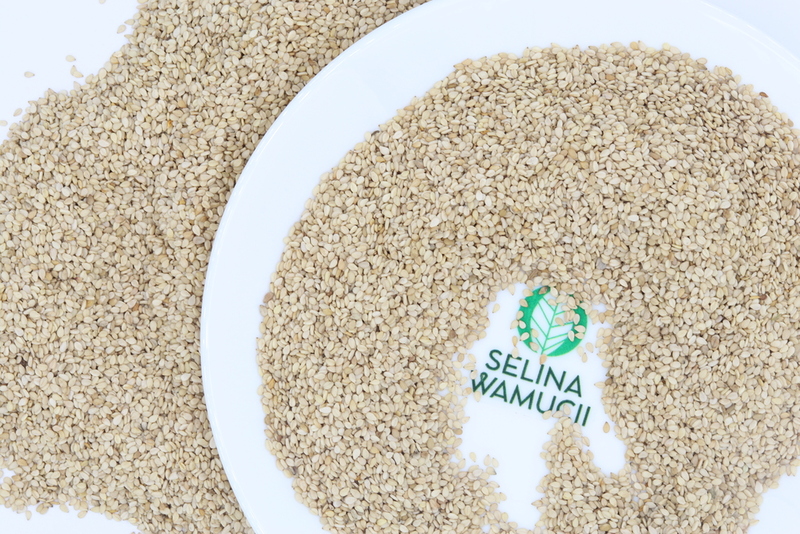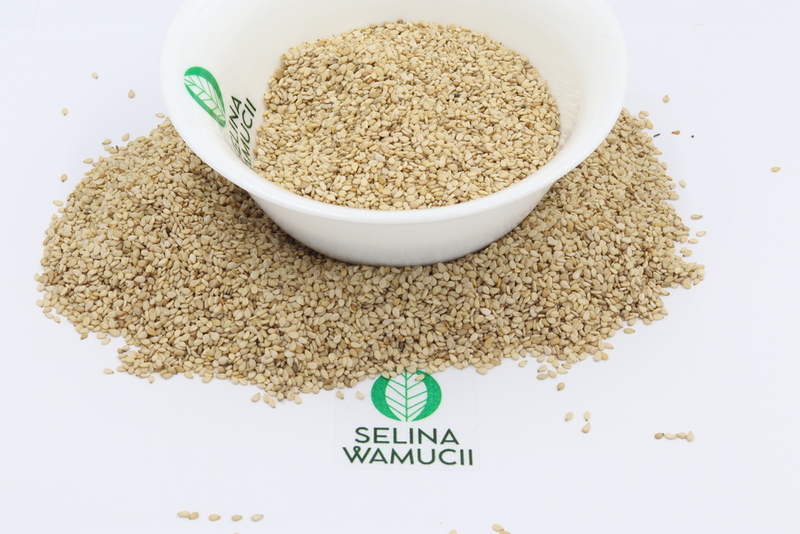Buy Guinea Sesame Directly From Exporters & Suppliers - Best of 2024 Market Prices
| Summary | |
|---|---|
| Produce | Guinea Sesame |
| Common Name | Sesame seeds |
| Varieties | White sesame Black sesame |
| Size | 3 to 4 mm long 2 mm wide 1 mm thick |
| Season | Throughout the year |
| Packing Specification | 25kg new pp bags, Plastic bags or containers with size depending on client requirement |
| Transport Conditions | Free from Moisture, room temperature |
The common phrase, “Open Sesame” in ‘Ali Baba and the Forty Thieves,’ originated from the act of ripe sesame seeds splitting and releasing a pop. Mythically, opening the capsule releases the treasure of sesame seeds as applied in the story where the phrase magically opened a sealed cave. Guinea Sesame, like the rest around the world, is valuable for its oil, given that it has the highest oil content of all oil crops. Additionally, sesame can be consumed as food, either toasted or raw, processed, and used in bakery products. If well dried, sesame hay can get used as fodder.
The sesame seed was domesticated over 3000 years ago, making it one of the oldest oilseed crops known to humanity. Sesame is a flowering plant of the genus Sesanum, also called benne. The domesticated and cultivated type known as S. Indicum, originated in India dating 5500 years ago. The plant has been cultivated in China for nearly 5000 years now. There have been claims of the trade of sesame between Mesopotamia and the Indian subcontinent in the 2000 BC. Some reports claim its cultivation in Egypt and others in the New Kingdom. Regardless, its historical origin was favored by its tolerance of drought-like conditions making it capable of thriving and growing where other crops fail, hence why it has been called a survivor crop.
The flowers can be yellow, white, pink, blue, or purple, and the seeds also occur in many colors depending on the cultivar. The most-traded variety, however, is off-white colored. Other standard colors would be buff, tan, gold, brown, reddish, gray, and black. The hull and the fruit, however, have a consistent tone. Sesame seeds are small, but their sizes also vary with the variety.
Sesame flowers eventually develop into dozens of elongated seed pods. A capsule protects the seeds.
In the world production of edible oil, sesame holds the sixth position and twelfth in world vegetable oil. Africa accounts for more than 40% of the sesame seed production in the world. Guinea exports to other African countries as well as Asia. Its annual production volume is approximately 2.9K tons.
Local Guinea sesame varieties either have black, white, or brown seed colors. The plant, however, is divided into two types. It could be shatter-resistant or non-shattering resistant. Shattering varieties have capsules that pop open when dry, and most of the seed gets lost as a result. Non-shattering types, on the other hand, prevent the capsule from opening at dry down.
Sesame takes 3 to 4 months, depending on season and variety, to reach maturity. For a successful harvest, the plants are started indoors for a few weeks before the final frost. The seeds are planted a quarter-inch deep in a rich growing medium. If kept moist, plants emerge in 10-14 days and are ready to be transplanted once outside temperatures reach 70 degrees. Once established, Guinea sesame is drought-tolerant, can thrive in high temperatures with little water, and will grow 3-5 feet or taller. Full sunlight spaced 2-3 feet apart allows healthy development. Sesame varieties have adapted to different types of soils. The high yielding crops thrive best on well-drained fertile soils of medium texture and neutral PH (5.4 and 6.75). Warm conditions above 23°c (73° F) and equal rainfall distribution of 300-600 mm during the vegetation period favor growth and yields. On the whole, therefore, sesame seeds are grown throughout the three seasons.
Guinea sesame seeds are ready for harvest when the pods turn brown and begin to open(dehiscence). Drought is the preferred harvesting climate. The dehiscence period varies, so farmers cut the plants using their hands and place them in an upright position together to continue ripening until all capsules have opened. Mature seed pods are delicate and get picked carefully to avoid seed loss. Once harvested, it is difficult to dry the seeds because of their small size. This means the seed is harvested as dry as possible and stored at 6% moisture or less. Seeds are cleaned, then maybe hulled by drying the seeds before dehulling or by soaking in water overnight to soften the hull; a process called “wet” dehulling. After, they get passed through an electronic machine that sorts via color by rejecting any discolored seeds to ensure perfect color as these are the seeds perceived to be of higher quality. The immature or off-sized seeds are removed and used for sesame oil production. Sesame oil is mainly packed in cantor as well as PET bottles and stored at temperatures of less than 5°c in dimly lit racks. Seeds should be stored at room temperature. In the case of exportation, the transport is via refrigerated trucks.
Sign up to the Selina Wamucii platform today to sell or buy Guinea sesame seeds!
Get Instant Quote
Are you a producer of Guinea Sesame or other products?
Sign up today for FREE to buy or sell Guinea Sesame.





